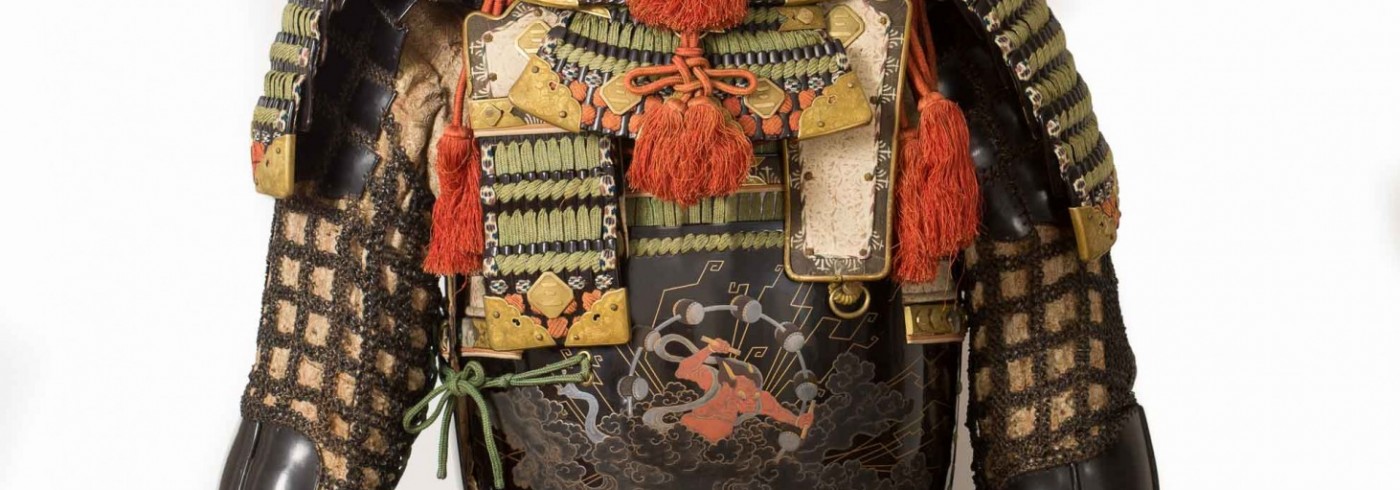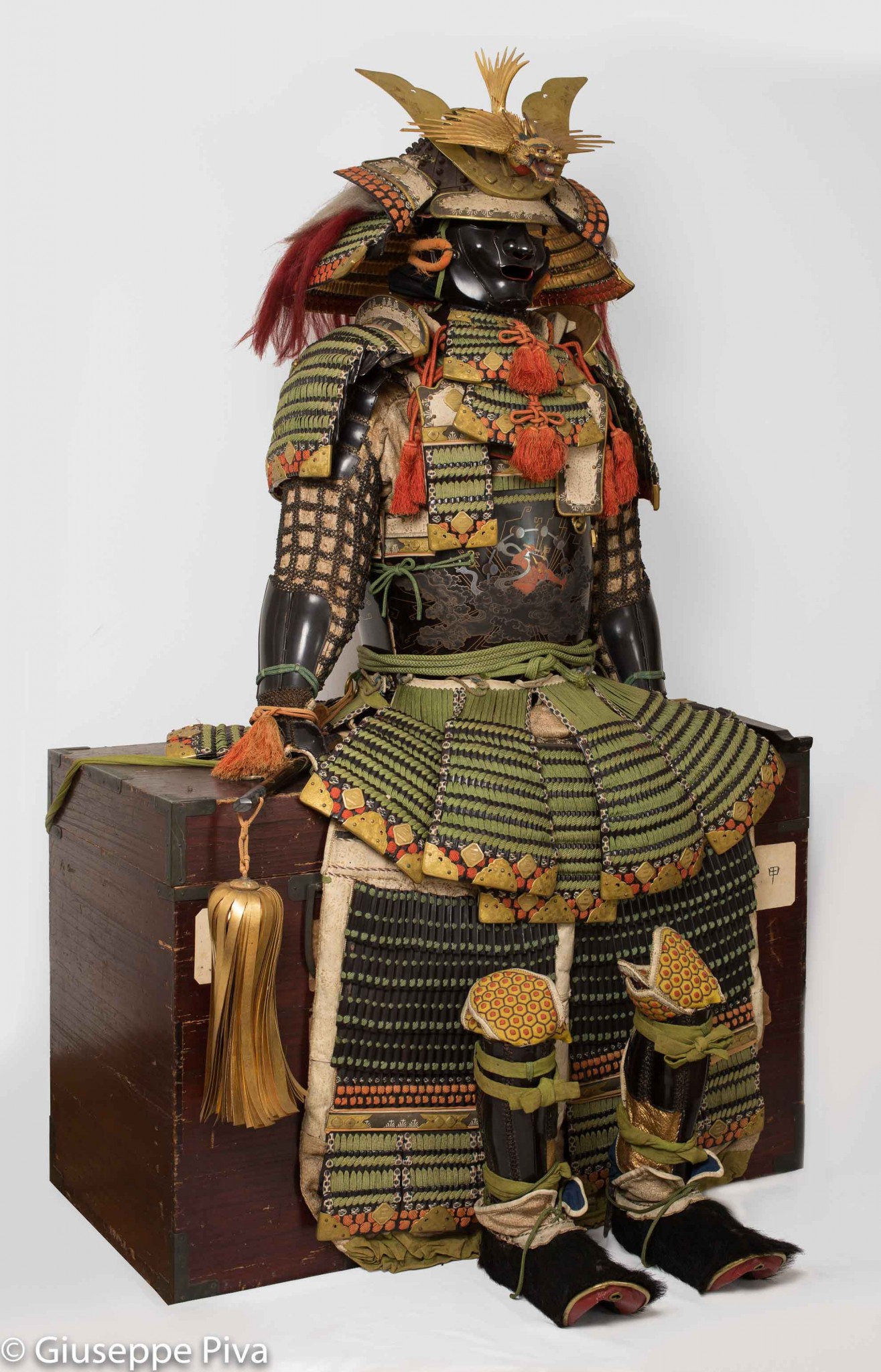
Hotoke-do tosei gusoku

With the kamon of Inaba family
Mid to late Edo period (1615 - 1867)
Kabuto bachi signed “Masuda Myochin Minbu Ki no Munesada Saku”
and dated "A lucky day in February in the 7th year of Horyaku" (1757)
Provenance:
Iyo no kami Inaba clan
This very important samurai armor is complete and original. It is entirely made of hon-kozane plates (individual scales) and bears gilt metal engraved kanamono all over its parts; interiors are lacquered in gold, a sign of a very high level provenance.
The suit comes with a wide series of accessories which can't be easily found on japanese armors: it includes two pairs of suneate (one heavier and one very light), as well as a nodowa (throat guard), a pair of bear-fur kutsu (shoes), a saihai (commander’s baton), a jinbaori (surcoat) a hakama (pants) and many other original clothes.
A mon with the character "three" from the Inaba clan is applied all over the armor’s elements.
The kabuto (samurai helmet) is made in the style of a Kamakura period o-boshi sujibachi kabuto, with a 18 plates rounded bowl showing large protruding rivets. The exquisite parcel giltwood madeate is shaped as a shachihoko, a mythical creature often represented as protection against fire. The shikoro (neck guard) is covered with a rare horsehair red and white decoration.
The do (cuirass) is richly decorated in maki-e lacquer over a black ground, with a red figure of Raijin - the god of Thunder - creating a storm beating his drums among clouds. The same black lacquer is used to cover all other armor’s parts, except for the helmet’s bowl.
The two large rectangular plates of different shapes which protect the armor’s toggle fasteners, sendan no ita and kyobi no ita, are again inspired by the great japanese armors of the Kamakura period.
The armor features a rare haidate (thigh guard) of hodo type, which include pending sections which replicate the style of the kusazuri (tassets).
The Inaba samurai family originated in 16th century Mino Province; during the Edo period, as hereditary vassals of the Tokugawa, the clan was classified fudai and its members were appointed daimyo of large and strategic provinces; they also covered various important administrative, political and military roles.
Myochin Munesada, who signed and dated the kabuto, is reported to be son of the famous Muneakira; his works are very rare.
Sku: gus-1128
